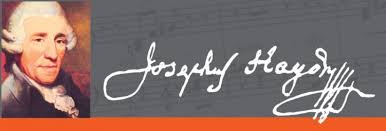

The Symphony No. 104 in D major (H. 1/104) is Joseph Haydn's final symphony. It is the last of the twelve London symphonies, and is known (somewhat arbitrarily, given the existence of eleven others) as the London Symphony. In Germany it is commonly known as the Salomon Symphony after Johann Peter Salomon, who arranged Haydn's two tours of London, even though it is one of three of the last twelve symphonies written for Viotti's Opera Concerts, rather than for Salomon.
The work was composed in 1795 while Haydn was living in London, and premiered there at the King's Theatre on 4 May 1795, in a concert featuring exclusively Haydn's own compositions and directed by the composer. The premiere was a success; Haydn wrote in his diary "The whole company was thoroughly pleased and so was I. I made 4000 gulden [about US$2000 today] on this evening: such a thing is possible only in England."
The exuberant finale, in fast tempo and in sonata form, opens in the mode of folk music using a drone bass and a theme often claimed to have originated as a Croatian folk song; for details see Haydn and folk music. The development section settles on the dominant of the main key, as is typical, but the recapitulation does not occur immediately. Instead, the development is extended with a section in F♯ minor, after which the recapitulation in D major follows immediately.
Opening theme of the final movement:
